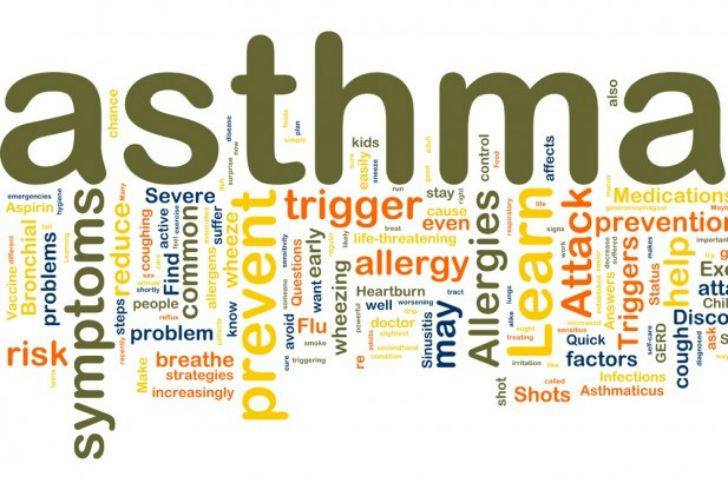Childhood Asthma: A Parent's Guide
Childhood Asthma: A Parent's Guide

Asthma is a chronic lung condition that affects millions of children worldwide. It causes the airways to become inflamed and narrow, making breathing difficult. While there's no cure, effective management can significantly improve a child's quality of life.
Understanding Childhood Asthma
What is Asthma?
Asthma is a condition where the airways become inflamed and narrow, making it difficult to breathe. Symptoms include wheezing, coughing, shortness of breath, and chest tightness. These symptoms can vary in severity and frequency.
Common Triggers
Many things can trigger asthma symptoms, including:
• Allergens: dust mites, pet dander, pollen, mold
• Respiratory infections: colds, flu
• Exercise
• Cold air
• Irritants: smoke, strong odors, pollution

Managing Childhood Asthma
Regular Checkups
Regular check-ups with a pediatrician are essential for monitoring asthma and adjusting treatment as needed. Early detection and intervention can prevent complications.
Create a Safe Environment
A smoke-free, allergen-free home is crucial. Reduce dust mites, control pet dander, and keep mold at bay. Good ventilation and cleaning are also important.
Proper Inhaler Use
Correct inhaler technique is vital. Many children benefit from using a spacer. Practice proper breathing techniques, such as slow, deep breaths.
Monitor Symptoms
Keep a record of asthma symptoms to identify patterns and triggers. Early warning signs include increased coughing, wheezing, or shortness of breath.
Encourage Physical Activity
Regular exercise is important for overall health. Warm-up before activity and use appropriate medication if needed.
Dietary Considerations
While there's no specific asthma diet, maintaining a healthy diet is essential for overall well-being. Some children may have food allergies or sensitivities that trigger asthma symptoms.
Mental Health Support
Asthma can impact a child's emotional well-being. Encourage open communication, provide emotional support, and teach relaxation techniques.
School and Social Life
Collaborate with school staff to develop an asthma action plan. Educate teachers and classmates about asthma to ensure a safe environment for your child.
Sarah's Family Story
Sarah's son, Ethan, was diagnosed with asthma at age 3. They worked closely with his pediatrician to develop a management plan. By identifying triggers like dust mites and pollen, they were able to reduce the frequency of asthma attacks. Ethan's school nurse was informed about his condition, and he carried an inhaler at all times. With consistent medication use, regular check-ups, and a supportive environment, Ethan has been able to live an active and fulfilling life.
Understanding Asthma Triggers
Identifying and avoiding asthma triggers is crucial for preventing attacks. Common triggers include:
• Allergens: Dust mites, pet dander, pollen, mold
• Irritants: Smoke, strong odors, chemicals
• Respiratory infections: Colds, flu
• Exercise-induced asthma: Triggered by physical activity
• Weather changes: Cold air, humidity
• Medications: Some medications can trigger asthma symptoms
To identify your child's specific triggers, keep a detailed asthma diary. Record when symptoms occur and any potential triggers present at the time.
Creating a Safe Home Environment
A well-maintained home can significantly reduce asthma triggers. Consider the following:
• Dust mites: Use allergen-proof covers for mattresses, pillows, and box springs. Wash bedding in hot water weekly.
• Pet dander: If possible, keep pets out of bedrooms. Regularly bathe pets and clean their living areas.
• Mold: Use a dehumidifier to control moisture levels. Clean up mold promptly.
• Ventilation: Ensure proper ventilation in your home.
• Cleaning products: Choose low-odor or fragrance-free cleaning products.
Asthma Medications
Several types of medications are used to manage asthma:
• Quick-relief inhalers: Used to treat sudden asthma symptoms.
• Long-term control medications: Taken daily to prevent asthma attacks.
• Combination inhalers: Deliver both quick-relief and long-term control medications in one inhaler.
It's essential to use medications as prescribed and to teach your child proper inhaler technique.
Asthma Action Plan
An asthma action plan outlines how to manage your child's asthma on a daily basis and during flare-ups. It should include:
• Information about your child's asthma triggers
• A list of medications and how to use them
• Instructions for monitoring lung function
• When to seek emergency care
Work with your child's doctor to develop a personalized asthma action plan.
Managing Asthma at School
Collaborate with your child's school to ensure they have the support they need. Consider the following:
• Develop an Individualized Health Plan (IHP) with the school nurse.
• Educate teachers and staff about asthma.
• Provide your child with extra medication for school.
• Encourage physical activity but allow for modifications as needed.
Coping with Asthma
Living with asthma can be challenging, but there are strategies to help your child cope:
• Open communication: Encourage your child to express their feelings about asthma.
• Education: Teach your child about asthma and how to manage their condition.
• Positive reinforcement: Praise your child for following their asthma action plan.
• Support groups: Connect with other families dealing with asthma.
When to Seek Emergency Care
Call 911 or go to the nearest emergency room if your child experiences:
• Severe difficulty breathing
• Persistent wheezing
• Chest pain
• Bluish lips or fingernails
• No improvement after using a quick-relief inhaler
By following these guidelines and working closely with your child's healthcare provider, you can effectively manage childhood asthma and help your child live a full and active life.
